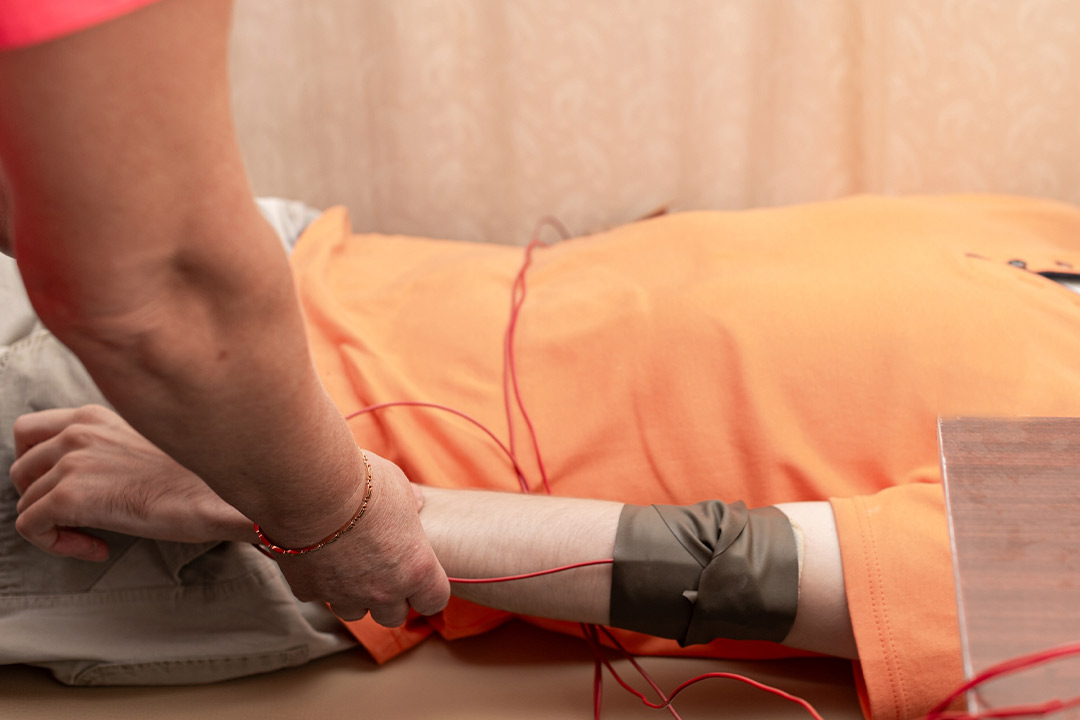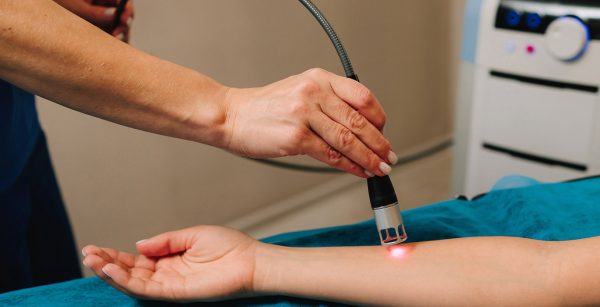6 Innovations in PEMF Technology for 2026

Pulsed Electromagnetic Field (PEMF) therapy has moved from an experimental concept to a widely used method for supporting healing and recovery. By delivering electromagnetic waves at specific frequencies, PEMF encourages the body’s natural repair processes, helping tissues absorb more oxygen, reducing inflammation, and supporting faster cellular recovery. What began as a treatment mainly used for bone healing in the 1950s has steadily expanded. The FDA’s 1979 approval for non-union fractures marked a turning point, opening the door for soft tissue repair, neurological applications, and broader pain-management treatments.
The past decade has brought major improvements in coil engineering, power efficiency, and device portability. Systems that were once restricted to clinical environments are now found in homes, gyms, and wellness centers worldwide. As public awareness grows and more research emerges, the global PEMF market accelerates.
With 2026 on the horizon, PEMF technology is entering another period of rapid advancement. From AI-guided therapy plans to highly efficient field designs, these innovations are reshaping how practitioners deliver care and how patients experience treatment. The following sections explore six breakthroughs that are expected to have the greatest impact over the next few years.
6 Breakthrough PEMF Therapy Innovations to Watch by 2026

Each of these developments represents a meaningful shift in how PEMF therapy is designed, delivered, and personalized. Together, they outline what the next generation of electromagnetic treatment may look like.
1. AI-Driven Personalized PEMF Protocols
As demand grows for more tailored treatment approaches, AI is beginning to influence PEMF delivery.
Here’s how these intelligent systems will reshape clinical decision-making:
- Adaptive treatment plans: Algorithms will study patient-specific data, such as recovery rate, pain levels, device usage patterns, or physiological feedback, to shape personalized frequency ranges and intensities.
- Real-time adjustments: Instead of static programs, AI-powered devices will adapt settings automatically as the body responds.
- More predictable outcomes: By identifying patterns in large amounts of patient data, AI can help practitioners choose the most efficient protocol for each condition.
This shift moves PEMF therapy away from one-size-fits-all treatments and toward precision-guided care.
2. Wearable PEMF Devices for Everyday Use
Advances in miniaturization are enabling PEMF therapy to move out of stationary devices and into lightweight wearables.
These upgrades will change treatment accessibility in several ways:
- Continuous therapy during daily routines: Wearables allow users to receive PEMF support while walking, working, or resting, which increases overall treatment exposure.
- Discreet and comfortable design: Slimmer coils and compact power units improve user comfort without reducing output.
- Built-in monitoring: Sensors can track physiological responses throughout the day, helping clinicians understand how real-world activity influences healing.
Wearable PEMF devices could become as common as fitness trackers, widening the therapy’s reach far beyond clinical spaces.
3. Integration With Telehealth Platforms
PEMF systems are increasingly designed to pair with telehealth environments, a trend that will continue to strengthen in 2026.
This integration allows for several practical improvements:
- Remote fine-tuning of treatment parameters: Practitioners can adjust frequencies, intensities, or session lengths without requiring in-person visits.
- Better support between appointments: Patients can receive professional guidance in real time, which reinforces treatment adherence.
- Access for underserved areas: Remote functionality allows people in rural or mobility-restricted situations to receive expert care that may not have been available locally. Contact Us.
Telehealth compatibility creates a continuous line of communication between provider and patient, making PEMF therapy more accessible.
4. Smart Data Analytics for Improved Outcomes
As devices gather more patient data, meaningful interpretation becomes increasingly important.
Advanced analytics will support this in several key ways:
- Identifying response patterns: Analytic software highlights trends that help practitioners refine treatment decisions.
- Progress tracking for patients: Clear visualizations motivate consistent use and help patients understand how their body is responding.
- Evidence-based optimization: Over time, datasets can reveal which protocols work best for specific diagnoses.
These insights help bridge the gap between subjective experience and measurable improvement.
5. Advanced Coil and Field Designs
Engineering improvements are making PEMF systems more targeted, consistent, and capable of addressing deeper tissue structures. These design upgrades will include:
- More accurate field distribution: New generator technologies offer smoother, more reliable field patterns.
- Improved deep-tissue reach: Redesigned coils can produce stronger yet controlled penetration, improving applicability for chronic or stubborn conditions.
- Greater anatomical precision: Practitioners can tailor field shapes to match areas that previously received inconsistent coverage.
These refinements bring PEMF closer to the precision level of other modern therapeutic tools.
6. Eco-Friendly and Sustainable Materials
As the wellness industry continues to prioritize sustainability, PEMF technology is evolving to reflect these values. Manufacturers are moving toward:
- Biodegradable or recyclable components: Reducing the environmental footprint of devices and accessories.
- Energy-efficient power systems: Lowering electricity requirements without compromising performance.
- Durable materials: Increasing longevity to reduce waste and replacement frequency.
These updates align PEMF therapy with broader health and environmental principles valued by many users.
Transforming Patient Outcomes: How These Technologies Make a Difference

The innovations described above do more than modernize equipment. They reshape how patients experience healing. By improving the accuracy of electromagnetic field delivery, next-generation PEMF systems tackle long-standing challenges such as inconsistent intensity, limited penetration, or protocol variability.
One of the most significant benefits is increased accessibility. Wearable devices and telehealth integration allow patients to continue therapy outside clinical environments, which is especially meaningful for people with limited mobility or those living far from treatment centers. When treatment is easier to maintain, results tend to improve.
Patient engagement also shifts in a positive direction. With real-time feedback and clearer progress tracking, individuals are more involved in their own recovery. This shift from passive treatment to active participation increases adherence and helps patients better understand their healing process. Digital monitoring tools further reinforce this connection by offering insights between sessions.
Clinically, improved PEMF systems demonstrate measurable benefits. Enhanced cellular oxygen absorption, sometimes increasing by up to 200%, supports faster tissue repair and reduces inflammation. More focused field delivery also enables clinicians to treat deeper or more complex areas, expanding the range of applications to conditions that once responded poorly to conventional PEMF systems.
PEMF can also work alongside other treatment modalities. Integrating PEMF with laser therapy, physical rehabilitation, or post-surgical care often produces stronger outcomes than using any one method alone. As these technologies continue to advance, PEMF will likely gain an even broader role across orthopedics, neurology, sports medicine, and long-term wellness care.
What These Innovations Mean for Practices and Patients
The wave of new PEMF technology arriving by 2026 signals an important shift in non-invasive care. For clinics and wellness providers, these advancements offer a chance to elevate treatment results while expanding service options. AI-guided protocols, improved analytics, and sustainable designs can all contribute to efficiency and stronger patient satisfaction.
Adopting these systems will require thoughtful planning. Practitioners may need to weigh initial equipment costs against long-term benefits such as reduced treatment times, higher patient volume, and improved outcomes. Staff training is also essential; understanding the capabilities of these advanced systems ensures they are used to their full potential. Integration with existing management or telehealth platforms should be deliberate and well-structured.
For patients, the practical advantages are clear. Wearable PEMF devices enable daily treatment without interrupting routines. Telehealth support reduces barriers to ongoing care. More refined field targeting allows clinicians to treat stubborn or complex conditions more effectively. These improvements can reduce reliance on pharmaceuticals and support faster recovery across a wide range of health concerns.
As 2026 approaches, the practices that adopt these innovations early will be well-positioned to lead in a rapidly evolving healthcare landscape. The combination of scientific insight, improved engineering, and enhanced user accessibility marks a meaningful turning point for PEMF therapy, a shift toward more personalized, efficient, and widely available care.
Moving Forward With Myosyte’s Advanced PEMF Solutions

Suppose you’re exploring ways to elevate healing, reduce pain, or integrate modern recovery tools into your routine. In that case, Myosyte offers a new generation of PEMF systems designed with these 2026 innovations in mind. Our technology supports faster recovery, improved comfort, and dependable day-to-day use, whether you’re treating chronic pain, supporting post-surgical rehabilitation, or enhancing long-term wellness programs. Myosyte’s systems integrate seamlessly into modern clinical workflows, giving practitioners reliable, non-invasive tools that strengthen outcomes and elevate the standard of care.
Myosyte combines thoughtful engineering with user-friendly design, giving you access to non-invasive solutions that fit seamlessly into your lifestyle or clinical practice. If you’re ready to take a step toward more effective and future-focused care, explore what Myosyte’s PEMF technology can do for you today.



